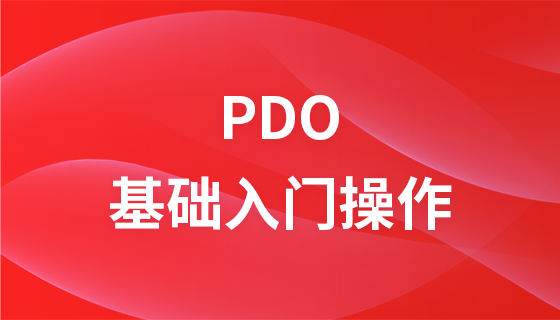
我构建了一个简单的 javascript 捆绑器,结果比我预期的要容易得多。我将分享我在这篇文章中学到的所有知识。
编写大型应用程序时,最好将 javascript 源代码划分为单独的 js 文件,但是使用多个脚本标签将这些文件添加到 html 文档中会带来新问题,例如
全局命名空间的污染。
比赛条件。
模块捆绑器将不同文件中的源代码合并到一个大文件中,帮助我们享受抽象的好处,同时避免缺点。
模块捆绑器通常分两步完成。
如前所述,我们在这里
我们将这样做(前面是 javascript 代码)
在文本编辑器中创建一个bundler.js 文件并添加以下代码:
const bundler = (entry)=>{
const graph = createdependencygraph(entry)
const bundle = createbundle(graph)
return bundle
}
bundler 函数是我们bundler 的主要入口。它获取文件(入口文件)的路径并返回一个字符串(捆绑包)。在其中,它使用 createdependencygraph 函数生成依赖图。
const createdependencygraph = (path)=>{
const entrymodule = createmodule(path)
/* other code */
}
createdependencygraph 函数获取入口文件的路径。它使用 createmodule 函数生成此文件的模块表示。
let id = 0
const createmodule = (filename)=>{
const content = fs.readfilesync(filename)
const ast = babylon.parse(content, {sourcetype: “module”})
const {code} = babel.transformfromast(ast, null, {
presets: ['env']
})
const dependencies = [ ]
const id = id++
traverse(ast, {
importdeclaration: ({node})=>{
dependencies.push(node.source.value)
}
}
return {
id,
filename,
code,
dependencies
}
}
createasset 函数获取文件的路径并将其内容读取到字符串中。然后该字符串被解析为抽象语法树。抽象语法树是源代码内容的树表示。它可以比作 html 文档的 dom 树。这使得在代码上运行一些功能变得更容易,例如搜索等。
我们使用babylon解析器从模块创建一个ast。
接下来,在 babel 核心转译器的帮助下,我们将代码内容转换为 es2015 之前的语法,以实现跨浏览器兼容性。
然后使用 babel 中的特殊函数遍历 ast 来查找源文件的每个导入声明(依赖项)。
然后我们将这些依赖项(相对文件路径的字符串文本)推送到依赖项数组中。
我们还创建一个 id 来唯一标识该模块并且
最后我们返回一个代表该模块的对象。该模块包含一个 id、字符串格式的文件内容、依赖项数组和绝对文件路径。
const createdependencygraph = (path)=>{
const entrymodule = createmodule(path)
const graph = [ entrymodule ]
for ( const module of graph) {
module.mapping = { }
module.dependencies.foreach((dep)=>{
let absolutepath = path.join(dirname, dep);
let child = graph.find(mod=> mod.filename == dep)
if(!child){
child = createmodule(dep)
graph.push(child)
}
module.mapping[dep] = child.id
})
}
return graph
}
回到 createdependencygraph 函数,我们现在可以开始生成图的过程。我们的图表是一个对象数组,每个对象代表我们应用程序中使用的每个源文件。
我们使用入口模块初始化图表,然后循环它。尽管它只包含一项,但我们通过访问入口模块(以及我们将添加的其他模块)的依赖项数组来将项添加到数组的末尾。
dependency 数组包含模块所有依赖项的相对文件路径。该数组被循环,对于每个相对文件路径,首先解析绝对路径并用于创建新模块。该子模块被推到图的末尾,并且该过程重新开始,直到所有依赖项都已转换为模块。
此外,每个模块都给出一个映射对象,该对象简单地将每个依赖项相对路径映射到子模块的 id。
对每个依赖项执行检查模块是否已存在,以防止模块重复和无限循环依赖。
最后我们返回我们的图表,它现在包含我们应用程序的所有模块。
依赖图完成后,生成包将涉及两个步骤
我们必须将模块对象转换为字符串,以便我们能够将它们写入到bundle.js 文件中。我们通过将 modulestring 初始化为空字符串来实现此目的。接下来,我们循环遍历图表,将每个模块作为键值对附加到模块字符串中,模块的 id 为键,数组包含两项:首先,包装在函数中的模块内容(以赋予其范围,如前所述) )和第二个包含其依赖项映射的对象。
const wrapmodules = (graph)=>{
let modules = ‘’
graph.foreach(mod => {
modules += `${http://mod.id}: [
function (require, module, exports) {
${mod.code}
},
${json.stringify(mod.mapping)},
],`;
});
return modules
}
还要注意,包装每个模块的函数将 require、export 和 module 对象作为参数。这是因为这些在浏览器中不存在,但由于它们出现在我们的代码中,我们将创建它们并将它们传递到这些模块中。
这是将在加载包后立即运行的代码,它将为我们的模块提供 require、module 和 module.exports 对象。
const bundle = (graph)=>{
let modules = wrapmodules(graph)
const result = `
(function(modules) {
function require(id) {
const [fn, mapping] = modules[id];
function localrequire(name) {
return require(mapping[name]);
}
const module = { exports : {} };
fn(localrequire, module, module.exports);
return module.exports;
}
require(0);
})({${modules}})`;
return result;
}
我们使用立即调用的函数表达式,它将我们的模块对象作为参数。在其中我们定义了 require 函数,该函数使用模块对象的 id 从模块对象中获取模块。
它构造一个特定于特定模块的 localrequire 函数,以将文件路径字符串映射到 id。以及一个具有空导出属性的模块对象
它运行我们的模块代码,传递 localrequire、模块和导出对象作为参数,然后返回 module.exports,就像 node js 模块一样。
最后我们在入口模块(索引 0)上调用 require。
为了测试我们的捆绑器,在bundler.js文件的工作目录中创建一个index.js文件和两个目录:一个src和一个公共目录。
在public目录下创建一个index.html文件,并在body标签中添加以下代码:
<!doctype html>
<html>
<head>
<title>module bundler</title>
<meta name="viewport" content="width=device-width, initial-scale=1" />
</head>
<body>
<div id='root'></div>
<script src= ‘./bundler.js> <script>
</body>
</html
in the src directory create a name.js file and add the following code
常量名称=“大卫”
导出默认名称
also create a hello.js file and add the following code
从‘./name.js’导入名称
const hello = document.getelementbyid(“root”)
hello.innerhtml = “你好” + 名字
lastly in the index.js file of the root directory import our bundler, bundle the files and write it to a bundle.js file in the public directory
const createbundle = require(“./bundler.js”)
const run = (输出, 输入)=>{
让bundle = creatbundle(entry)
fs.writefilesync(bundle, ‘utf-8’)
}
运行(“./public/bundle.js”,“./src/hello.js”)
Open our index.html file in the browser to see the magic. In this post we have illustrated how a simple module bundler works. This is a minimal bundler meant for understanding how these technologies work behind the hood. please like if you found this insightful and comment any questions you may have.
以上就是我写了一个模块捆绑器注释等的详细内容,更多请关注php中文网其它相关文章!

每个人都需要一台速度更快、更稳定的 PC。随着时间的推移,垃圾文件、旧注册表数据和不必要的后台进程会占用资源并降低性能。幸运的是,许多工具可以让 Windows 保持平稳运行。




Copyright 2014-2025 https://www.php.cn/ All Rights Reserved | php.cn | 湘ICP备2023035733号